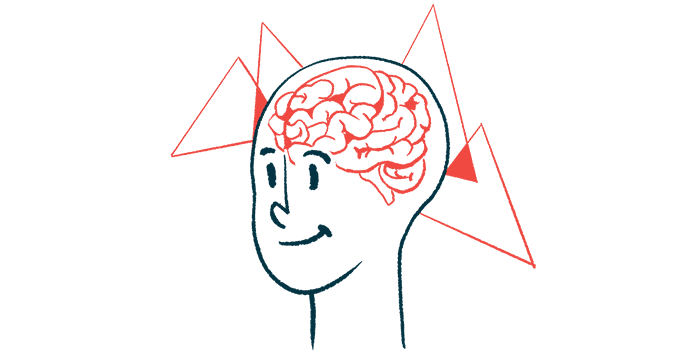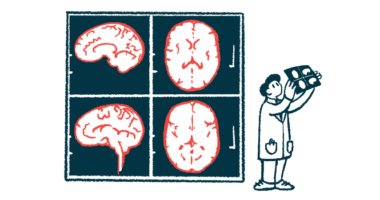Gains seen in Parkinson’s with Symbyx’s red light therapy helmet
Geoffrey Herkes, PhD, to present results at American Academy of Neurology meeting in April

Symbyx Neuro, Symbyx Biome’s red/infrared light therapy helmet, improves motor function in Parkinson’s disease, according to data from a small sham-controlled clinical trial.
Parkinson’s “has historically been an intractable, neurodegenerative condition that typically declines with no improvements possible,” Wayne Markman, Symbyx‘s CEO, said in a company press release. “The Symbyx Neuro users showed improvement across all measures.”
These improvements were superior to a sham helmet regarding facial expression, upper limb, walking, and tremor domains.
“Importantly, light therapy does not interfere with other Parkinson’s treatments, including medications,” said Geoffrey Herkes, PhD, a neurologist and the director of research at Sydney Adventist Hospital (known as the San), Australia. Herkes, who is on the clinical team supervising the trial, will present the results at the American Academy of Neurology annual meeting, April 22-27.
Parkinson’s is a progressive neurological disorder marked by motor symptoms, such as muscle rigidity, tremor, and difficulty walking, and nonmotor symptoms, including mood disorders, problems swallowing, and a reduced sense of smell.
While both red and infrared light are painless, the former is visible and the latter is invisible to the eye and reaches deeper in the tissues. Light therapy, also called photobiomodulation, is increasingly thought to result in several health benefits.
According to Symbyx, light therapy may reduce Parkinson’s symptoms by targeting mitochondria, the cell’s powerhouses, and/or the release of the nerve-signaling molecule dopamine, which is abnormally low in Parkinson’s. It may also support nerve function, and reduce pain and inflammation.
In previous studies, it was shown to improve mobility, cognition, and fine motor skills in people with Parkinson’s, along with the sense of smell — the impairment that’s one of the earliest signs of the neurodegenerative disease.
Symbyx Neuro delivers a 12-minute cycle of red light therapy followed by 12 minutes of infrared light therapy. The initial red light cycle is expected to target the brain’s superficial structures and networks and prime them to communicate more effectively with deeper structures, which are targeted by the infrared cycle.
The device , which is portable and rechargeable, is recommended for daily use, up to five times a week.
Effects of red light therapy on Parkinson’s patients
In the new trial, 40 participants underwent light therapy with either Symbyx Neuro or a sham helmet at home for 12 weeks (three months). All the participants in the sham group received active treatment following a four-week break.
Participants underwent tests for motor function before and after the 12-week trial, as assessed with the standard Movement Disorders Society-Unified Parkinson’s Disease Rating Scale-Part 3. Researchers focused on changes in facial expression, upper and lower limb movement, walking pattern, and tremor.
“The San trial is the first of its kind in the world with a control group,” Markman said.
Results showed a greater proportion of Symbyx Neuro-treated patients were medium to strong responders relative to those who used the sham helmet (70% vs. 55%).
“There is clearly a placebo effect from using light therapy on some patients, but not on all,” Herkes said, adding “if you consider the subcategory results, however, then the positive benefits of active helmet light therapy become clearer.”
Among medium and strong responders, there was a 40% significant improvement in upper limb function, including finger and hand movements, with the Symbyx Neuro helmet, compared with nonsignificant improvements in the sham group.
Walking improved by 28% and facial expressions such as eye blinks and smiling by 27%, while tremors were reduced by 24%. No significant changes were observed for these measures in the sham group. Lower limb function, such as foot and leg movements and the ability to stand from a seated position, improved by 58% in both groups.
“This San trial of the new Symbyx Neuro light therapy helmet is critical research in Parkinson’s,” Markman said, adding “this research confirms that transcranial light therapy is an effective complementary therapy for reducing Parkinson’s symptoms.”
Herkes said “the best results” are accompanied by “a healthy diet, regular exercise, a realistic approach to treatment and support from qualified practitioners and caring friends or family members.” He said it would be expected that the “positive effect” of the sham helmet would decline over time.
Herkes said more data is forthcoming.







